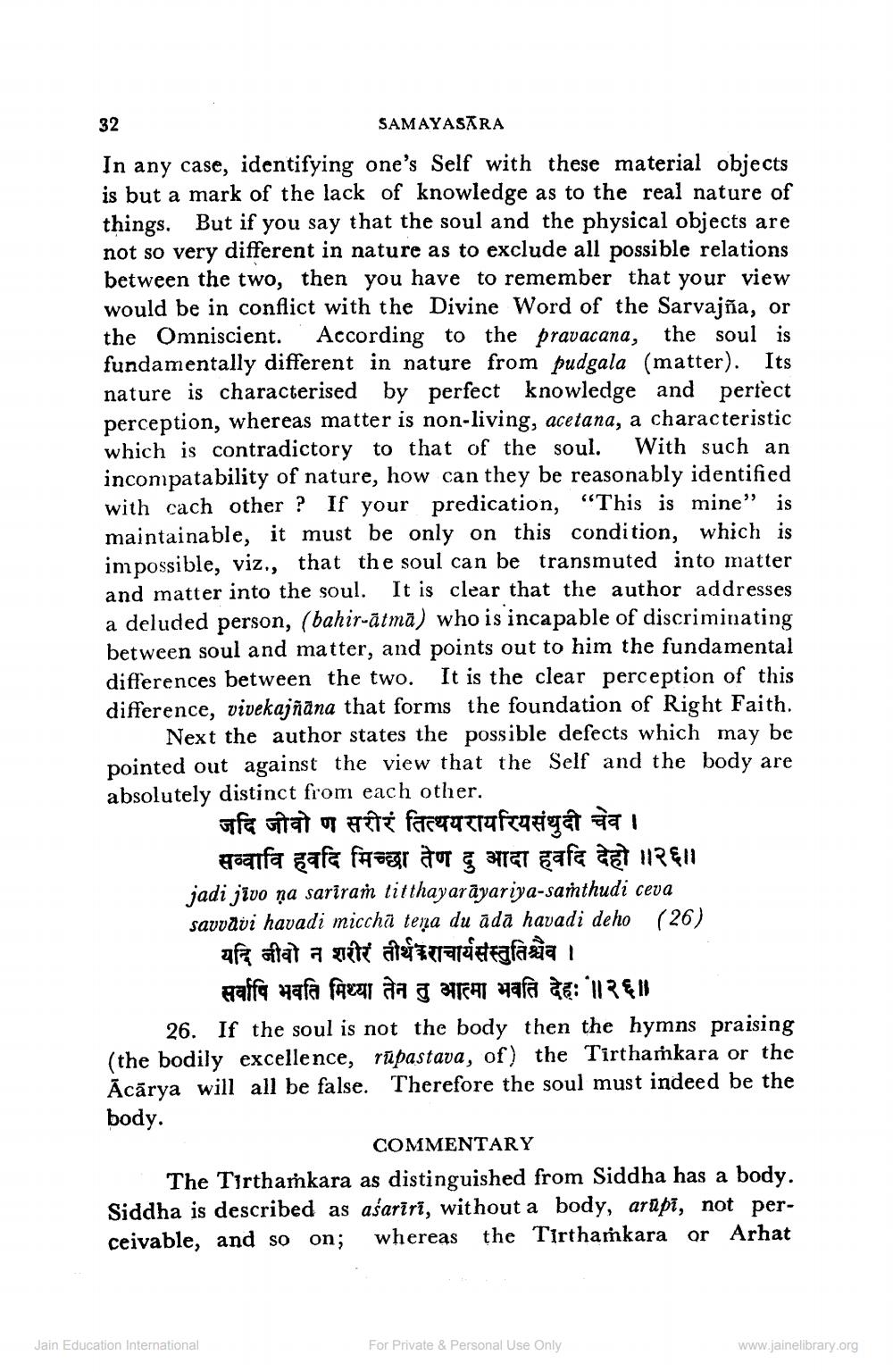________________
32
SAMAYASĀRA
In any case, identifying one's Self with these material objects is but a mark of the lack of knowledge as to the real nature of things. But if you say that the soul and the physical objects are not so very different in nature as to exclude all possible relations between the two, then you have to remember that your view would be in conflict with the Divine Word of the Sarvajña, or the Omniscient. According to the pravacana, the soul is fundamentally different in nature from pudgala (matter). Its nature is characterised by perfect knowledge and perfect perception, whereas matter is non-living, acetana, a characteristic which is contradictory to that of the soul. With such an incompatability of nature, how can they be reasonably identified with cach other? If your predication, "This is mine" is maintainable, it must be only on this condition, which is impossible, viz., that the soul can be transmuted into matter and matter into the soul. It is clear that the author addresses a deluded person, (bahir-ātmā) who is incapable of discriminating between soul and matter, and points out to him the fundamental differences between the two. It is the clear perception of this difference, vivekajñāna that forms the foundation of Right Faith.
Next the author states the possible defects which may be pointed out against the view that the Self and the body are absolutely distinct from each other.
जदि जीवो ण सरीरं तित्थयरायरियसंथुदी चेव ।
सव्वावि हवदि मिच्छा तेण दु आदा हवदि देहो ॥२६॥ jadi jivo ņa sariraṁ titthayaráyariya-samthudi ceva savvävi havadi miccha teņa du āda havadi deho (26)
यदि जीवो न शरीरं तीर्थराचार्यसंस्तुतिश्चैव ।
सर्वापि भवति मिथ्या तेन तु आत्मा भवति देहः ॥२६॥ 26. If the soul is not the body then the hymns praising (the bodily excellence, rūpastava, of) the Tirthamkara or the Ācārya will all be false. Therefore the soul must indeed be the body.
COMMENTARY The Tërtharkara as distinguished from Siddha has a body. Siddha is described as aśarīrī, without a body, arūpī, not perceivable, and so on; whereas the Tirthamkara or Arhat
Jain Education International
For Private & Personal Use Only
www.jainelibrary.org




